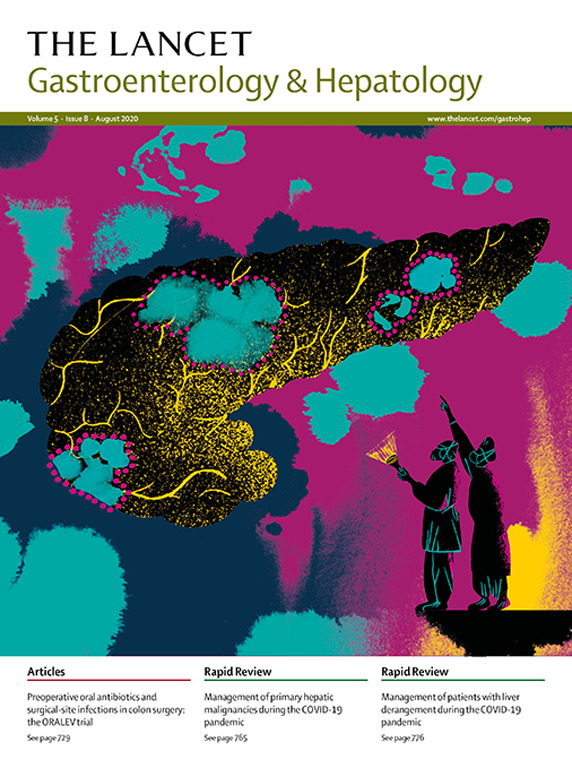Reducing alcohol-associated liver disease burden in the general population
IF 38.6
1区 医学
Q1 GASTROENTEROLOGY & HEPATOLOGY
引用次数: 0
Abstract
The prevalence of alcohol use disorder (AUD) and alcohol-associated liver disease (ALD) is rising. The National Institute on Alcohol Abuse and Alcoholism organised a multistakeholder workshop focused on reducing the burden of ALD. Decreasing ALD morbidity and mortality requires a multipronged approach, including increased population-based screening for AUD, early recognition of ALD, and multidisciplinary treatment. Recommended screening tools for alcohol use include the alcohol use disorders identification test for consumption (AUDIT-C). In patients with elevated AUDIT-C scores (AUDIT-C score of ≥3 points in women, ≥4 points in men), screening for fibrosis is recommended using non-invasive blood-based tests, such as the Fibrosis-4 index. Sequential testing using blood-based and imaging-based non-invasive liver disease assessment is preferred to blood-based tests alone to increase the positive predictive value of referral pathways. Screening, brief intervention, and referral to treatment are effective for reducing unhealthy alcohol use among adults who are not alcohol dependent. Integrated care models that incorporate mental health treatment into general medical settings are crucial for AUD and ALD. Emerging care models, such as multidisciplinary ALD clinics and substance use navigators, can improve patient engagement and outcomes. Markers of success include a reduction in per capita alcohol consumption, declines in morbidity and mortality related to AUD and ALD, and a decrease in health-care costs.减轻普通人群酒精相关性肝病负担
酒精使用障碍(AUD)和酒精相关性肝病(ALD)的患病率正在上升。国家酒精滥用和酒精中毒研究所组织了一次多利益相关者研讨会,重点是减轻酒精中毒的负担。降低ALD发病率和死亡率需要多管齐下的方法,包括增加基于人群的AUD筛查,早期识别ALD和多学科治疗。推荐的酒精使用筛查工具包括消费酒精使用障碍识别测试(AUDIT-C)。对于AUDIT-C评分较高的患者(女性AUDIT-C评分≥3分,男性≥4分),建议使用无创血液检查筛查纤维化,如纤维化-4指数。采用基于血液和基于影像学的非侵入性肝病评估的顺序检测优于单独的基于血液的检测,以增加转诊途径的阳性预测值。筛查、短暂干预和转诊治疗对于减少非酒精依赖的成年人不健康饮酒是有效的。将心理健康治疗纳入一般医疗环境的综合护理模式对AUD和ALD至关重要。新兴的护理模式,如多学科ALD诊所和药物使用导航,可以提高患者的参与度和结果。成功的标志包括人均饮酒量的减少,与澳元和ALD相关的发病率和死亡率的下降,以及医疗保健费用的下降。
本文章由计算机程序翻译,如有差异,请以英文原文为准。
求助全文
约1分钟内获得全文
求助全文
来源期刊

Lancet Gastroenterology & Hepatology
Medicine-Hepatology
CiteScore
50.30
自引率
1.10%
发文量
0
期刊介绍:
The Lancet Gastroenterology & Hepatology is an authoritative forum for key opinion leaders across medicine, government, and health systems to influence clinical practice, explore global policy, and inform constructive, positive change worldwide.
The Lancet Gastroenterology & Hepatology publishes papers that reflect the rich variety of ongoing clinical research in these fields, especially in the areas of inflammatory bowel diseases, NAFLD and NASH, functional gastrointestinal disorders, digestive cancers, and viral hepatitis.
 求助内容:
求助内容: 应助结果提醒方式:
应助结果提醒方式:


